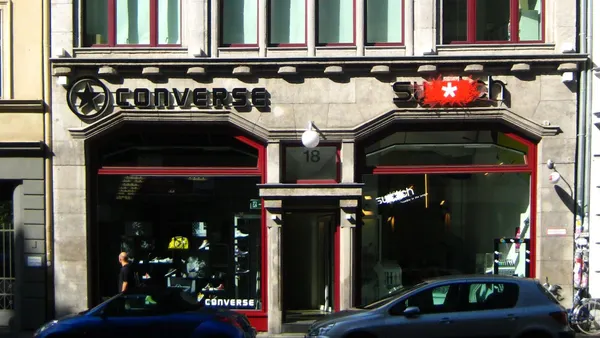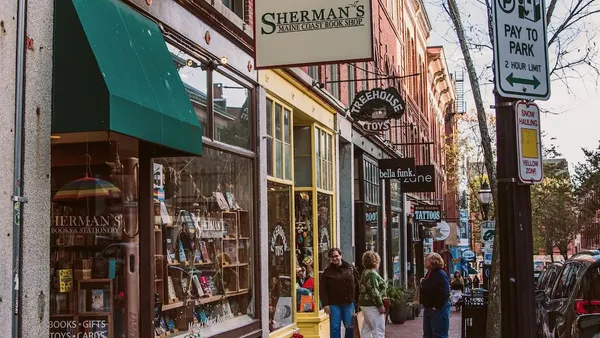Dive Brief:
-
Two-thirds of all shoppers spend at off-price retailers, according to a report from NPD Group’s data service Checkout Tracking, which measures consumer buying behavior.
-
Off-price shoppers are responsible for 75% of apparel purchases across all channels, shopping at various off-price retailers and outlet stores, the study found.
-
Off-price shopping grew 4% this year through April, compared to the same period last year.
Dive Insight:
“Off-price retailers are resonating with fashion and cost-conscious consumers alike, and are stealing department store business for good reason,” Marshal Cohen, NPD Group’s chief industry analyst, said in a statement. “Off-price is second only to the online channel in terms of growth rate.”
That would be no surprise to Moody’s, which two years ago noted the stellar performance of off-price retailers T.J. Maxx, Ross, and Burlington, and predicted steady growth for them of 6% to 8% in the next five years, above the 4% predicted for the rest of retail. Brick-and-mortar off-price retailers saw half of shopping visits to stories convert to purchases, according to NPD.
These results are leading many apparel retailers to start or expand an outlet channel. They include department stores like Nordstrom—whose Nordstrom Rack has operated since the 1970s—and discount department retailer Kohl’s, which last year launched an off-price pilot. Macy’s started its Backstage off-price effort last year as well, and Gap has expanded its fleet of outlet stores amid a rash of store closings.
“Consumers are clearly looking for better deals and they know if they shop at an off-price retailer they will get them,” added Cohen. “Apparel shoppers are finding just what they want at off-price retailers at the right time and at the right price, and that isn’t always the case with department stores.”
But not all off-price stores are alike, experts have told Retail Dive. TJX Cos. Marshall’s and TJ Maxx stores foster a treasure hunt-like atmosphere with a good number of high-end goods at low prices, thanks to their strong merchandising chops and special relationships with many brands. And Nordstrom Rack, perhaps thanks to its longevity, also outshines many in the space, according to Shelley E. Kohan, VP of retail consulting at store analytics firm RetailNext, who says, the retailer is “absolutely by far the best at outlet” with stores that are easy to navigate, full of desirable merchandise, the top-notch customer service its flagships are known for.
“I’m not talking about T.J. Maxx—those are two different formats,” she said. “As far as the outlet, [most] can't figure it out, but Nordstrom Rack kills it.”
Still, off-price stores can provide retailers with a few problems, including irritating consumers with lower-quality merchandise tagged with prices never found at any retail store. Retailers with flagship stores also risk losing sales to their off-price channels.
“They’ll do a lot of business. The question is: How much is truly incremental, how much simply represents transfer sales,” Mark Cohen, director of retail studies at Columbia University's Graduate School of Business, told Retail Dive about off-price stores in general and Macy’s Backstage effort in particular. “And more insidious than that, how much will it further erode Macy’s brand equity?”
That can be especially true of luxury brands, which lose a significant part of their cachet if too many of their sales include lower-quality and lower-priced outlet merchandise. Coach learned that lesson the hard way, and has seen results improve in recent quarters after tamping down outlet sales. That brand now says it is considering leaving department stores that don’t sell at flagship prices.











